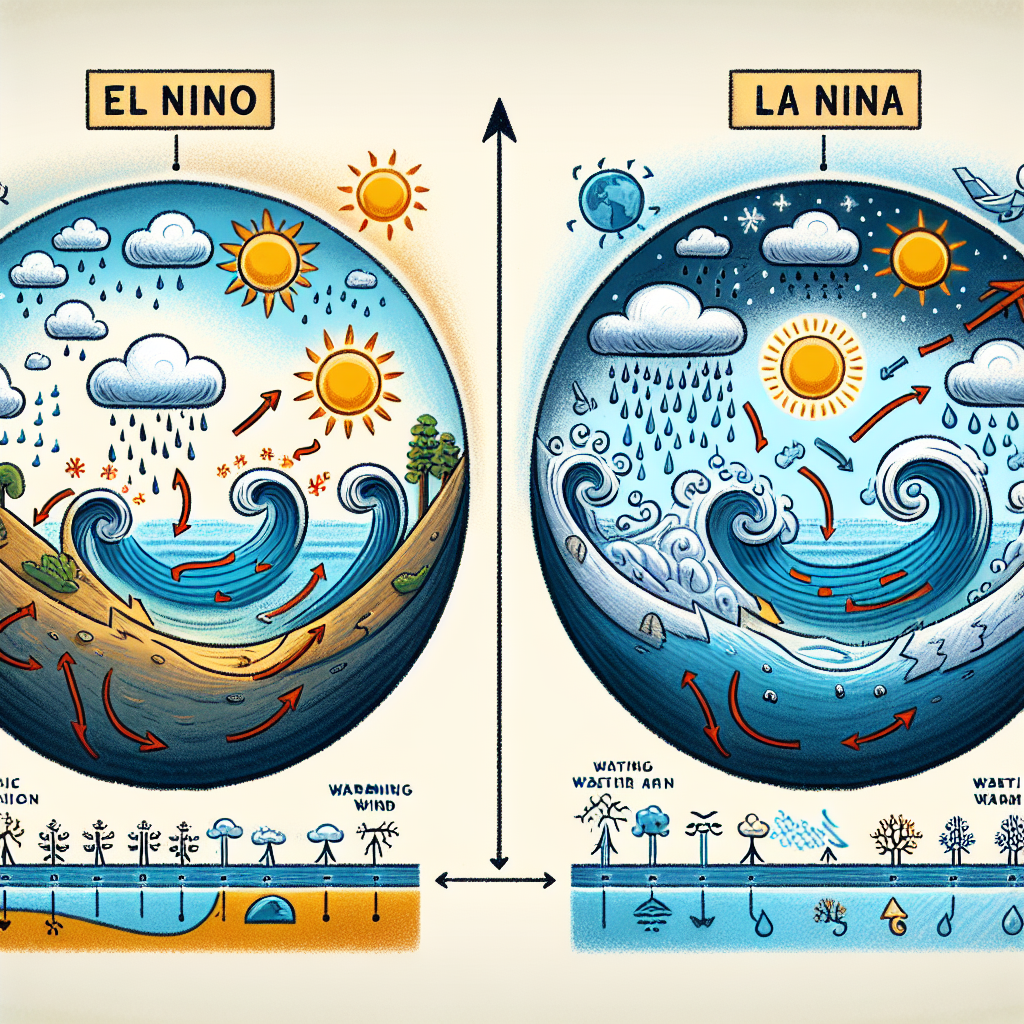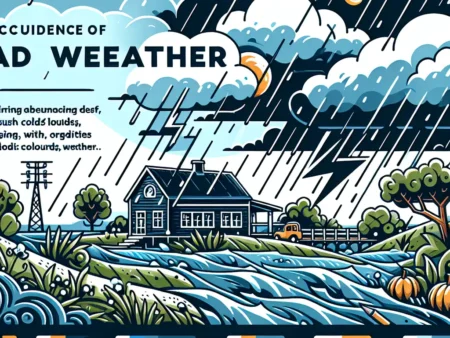El Nino dan La Nina adalah fenomena alam yang mempengaruhi cuaca global. El Nino menyebabkan peningkatan suhu permukaan laut, sementara La Nina menyebabkan penurunan suhu. Kedua fenomena ini dapat menyebabkan perubahan pola cuaca ekstrem di berbagai wilayah dunia.
El Nino dan La Nina: Bagaimana Mereka Mempengaruhi Cuaca?
-
Table of Contents
- Introduction
- Understanding El Nino and La Nina
- El Nino
- La Nina
- Impact on Weather in Indonesia
- Droughts and Reduced Rainfall
- Flooding and Landslides
- Temperature Extremes
- Implications for Agriculture and Economy
- Agriculture
- Economy
- Adaptation and Mitigation Strategies
- Early Warning Systems
- Water Management
- Diversification of Agriculture
- Conclusion
Introduction

El Nino and La Nina are two weather phenomena that have a significant impact on weather patterns around the world, including Indonesia. These events occur in the Pacific Ocean and can cause extreme weather conditions such as droughts, floods, and changes in temperature. In this article, we will explore how El Nino and La Nina influence the weather in Indonesia and the implications for the country’s agriculture, economy, and society.
Understanding El Nino and La Nina
El Nino and La Nina are part of a larger climate pattern known as the El Nino-Southern Oscillation (ENSO). ENSO refers to the fluctuations in temperature between the ocean and atmosphere in the equatorial Pacific region. El Nino occurs when the sea surface temperatures in the central and eastern Pacific Ocean become unusually warm, while La Nina occurs when these temperatures become unusually cool.
El Nino
During an El Nino event, the warm ocean temperatures in the Pacific Ocean can disrupt the normal atmospheric circulation patterns, leading to changes in weather patterns worldwide. In Indonesia, El Nino is associated with reduced rainfall, droughts, and increased temperatures. These conditions can have severe consequences for agriculture, water resources, and public health.
La Nina
On the other hand, La Nina events are characterized by cooler ocean temperatures in the Pacific Ocean. This can lead to increased rainfall and cooler temperatures in Indonesia. While La Nina is generally associated with wetter conditions, it can also bring about extreme weather events such as heavy rainfall, flooding, and landslides.
Impact on Weather in Indonesia
Droughts and Reduced Rainfall
During El Nino events, Indonesia often experiences prolonged dry periods and reduced rainfall. This can lead to droughts, water shortages, and a decline in agricultural productivity. The lack of rainfall affects crops, livestock, and water availability for both rural and urban areas. In recent years, El Nino-induced droughts have caused significant damage to Indonesia’s agriculture sector, leading to food shortages and economic losses.
Flooding and Landslides
While El Nino brings dry conditions to some parts of Indonesia, La Nina can result in heavy rainfall and increased flood risk. The excess rainfall during La Nina events can overwhelm drainage systems, leading to flooding in low-lying areas. Floods can cause damage to infrastructure, displacement of communities, and loss of lives. Additionally, the increased rainfall can trigger landslides, particularly in hilly or mountainous regions, posing further risks to communities.
Temperature Extremes
Both El Nino and La Nina can influence temperature patterns in Indonesia. During El Nino, the country experiences higher temperatures, which can exacerbate the effects of droughts and increase the risk of wildfires. On the other hand, La Nina events can bring cooler temperatures, providing temporary relief from the heat. However, extreme cold spells during La Nina can also have adverse effects on agriculture and human health.
Implications for Agriculture and Economy
The impact of El Nino and La Nina on weather patterns in Indonesia has significant implications for the country’s agriculture and economy.
Agriculture
Indonesia heavily relies on agriculture as a major source of livelihood and food security. The changes in rainfall patterns caused by El Nino and La Nina can disrupt planting and harvesting seasons, leading to reduced crop yields and lower agricultural productivity. Droughts during El Nino can also result in water scarcity for irrigation, further affecting crop growth. These factors contribute to food shortages, increased food prices, and economic losses for farmers and the agricultural sector as a whole.
Economy
The agriculture sector’s vulnerability to El Nino and La Nina events has broader implications for Indonesia’s economy. As a significant contributor to the country’s GDP, any disruptions in agricultural production can have a ripple effect on other sectors. Reduced crop yields and increased food prices can impact inflation rates, consumer spending, and overall economic growth. Additionally, the costs associated with managing and recovering from extreme weather events such as floods and droughts can strain government budgets and resources.
Adaptation and Mitigation Strategies
To mitigate the impacts of El Nino and La Nina events, Indonesia has implemented various adaptation and mitigation strategies.
Early Warning Systems
The Indonesian government has invested in early warning systems to monitor and predict El Nino and La Nina events. These systems provide valuable information to farmers, policymakers, and communities, allowing them to prepare for and respond to the anticipated weather conditions. Early warnings enable farmers to adjust their planting schedules, implement water management strategies, and take necessary precautions to protect their crops and livestock.
Water Management
Improving water management practices is crucial in mitigating the effects of El Nino and La Nina. This includes investing in irrigation infrastructure, promoting water conservation techniques, and implementing efficient water allocation systems. By ensuring reliable access to water during droughts and managing excess rainfall during La Nina events, Indonesia can enhance its resilience to extreme weather conditions.
Diversification of Agriculture
Encouraging diversification in agriculture can help reduce the country’s vulnerability to El Nino and La Nina. By promoting the cultivation of diverse crops and introducing climate-resilient varieties, farmers can adapt to changing weather patterns. Diversification also extends to livestock farming, where farmers can explore alternative livestock species that are better suited to withstand extreme temperatures and rainfall variability.
Conclusion
El Nino and La Nina have a profound impact on the weather patterns in Indonesia, affecting agriculture, economy, and society. The occurrence of droughts, floods, and temperature extremes during these events poses significant challenges for the country. However, through early warning systems, improved water management, and diversification of agriculture, Indonesia can enhance its resilience and mitigate the adverse effects of El Nino and La Nina. By understanding and preparing for these weather phenomena, Indonesia can better protect its communities, ensure food security, and sustain its economic growth in the face of a changing climate.







